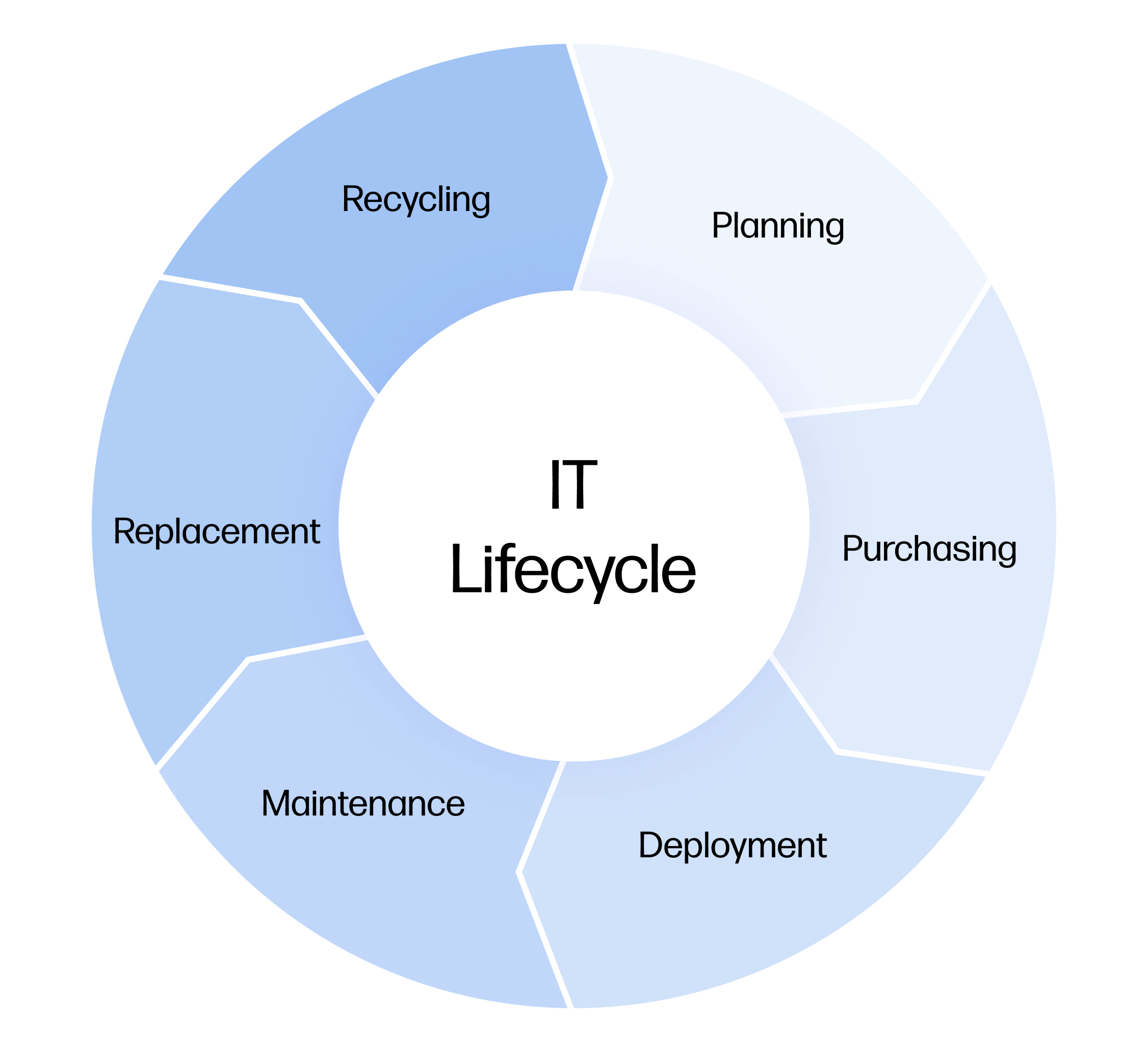The Complete Guide to IT Asset Management: Best Practices
Every organization runs on technology — from servers and software to mobile devices and cloud applications. Each of these components is an IT asset, and managing them effectively can make or break operational success.
That’s where IT Asset Management (ITAM) comes in. It’s not just about keeping an inventory — it’s about strategically organizing, monitoring, and optimizing every piece of hardware and software your company relies on.
But here’s the challenge: assets are always changing. New tools are adopted, old ones are retired, and software evolves faster than ever. Without a solid ITAM strategy, companies risk inefficiency, compliance issues, and unnecessary costs.
Let’s explore how IT asset management can drive profitability and efficiency — and review 10 best practices that every MSP should implement.
💡 Key Takeaways
- ITAM improves service delivery and profitability by tracking and optimizing assets throughout their lifecycle.
- Lifecycle planning prevents waste and downtime caused by outdated technology.
- Automation and monitoring enhance visibility, uptime, and operational efficiency.
- Regular audits ensure compliance and uncover optimization opportunities.
- Scalable ITAM platforms centralize control and align asset strategies with business goals.
How IT Asset Management Boosts Profitability
Effective ITAM goes beyond organization — it directly impacts the bottom line. By maintaining complete visibility over all assets, MSPs can:
- Reduce unnecessary costs: Identify unused or underutilized assets and eliminate wasted spending on redundant licenses or outdated equipment.
- Enhance client satisfaction: Better tracking means faster service and more reliable support.
- Maximize resource utilization: Allocate hardware and software where they deliver the most value.
In short, ITAM fuels efficiency, compliance, and ROI — all critical for growth-focused MSPs.
🔟 IT Asset Management Best Practices
1. Build a Structured Plan for Commissioning and Decommissioning
Standardize how new assets are onboarded and how outdated ones are retired.
- Define clear procedures for acquisition, configuration, and secure disposal.
- Use ITAM software to track lifecycle data and compliance.
- Conduct regular audits to ensure everything is properly documented and secure.
2. Actively Monitor All Assets
Visibility is everything.
- Implement automated monitoring tools to track performance and security.
- Set baseline metrics and create an incident response plan.
- Detect issues before they affect users or operations.
3. Track Each Asset Through Its Entire Lifecycle
Create a centralized asset inventory that’s updated in real time.
- Record manufacturer, warranty, and usage details.
- Establish policies for asset acquisition and retirement.
- Use automation to manage asset data accurately and efficiently.
4. Prioritize Critical Assets
Not all assets are created equal.
- Develop a risk management framework to identify critical systems.
- Define SLAs that align with your business goals.
- Allocate maintenance and monitoring resources where they’re needed most.
5. Centralize Software License Management
Managing licenses in multiple systems is a recipe for waste.
- Use a single license management platform to track renewals, usage, and compliance.
- Regularly audit software to remove redundant or unused licenses.
- Automate renewal reminders and reporting.
6. Be Proactive With Maintenance
Routine upkeep prevents downtime.
- Schedule regular maintenance for updates, backups, and hardware checks.
- Use automated tools for patch management.
- Continuously monitor performance to identify and resolve issues early.
7. Implement Automation Strategically
Automation is the secret weapon for modern MSPs.
- Identify repetitive processes like ticketing, updates, or reporting.
- Use integrated PSA or CPQ software for smart automation.
- Start small, test, and scale automation across departments.
8. Conduct Regular Self-Audits
Auditing helps maintain compliance and accuracy.
- Verify that all assets are properly registered and licensed.
- Document discrepancies and take corrective action.
- Continually update ITAM policies based on audit findings.
9. Share and Leverage Data Across Teams
Data is only valuable when it’s used.
- Develop a clear data collection and sharing strategy.
- Analyze asset performance trends to uncover inefficiencies.
- Encourage collaboration between IT, operations, and finance.
10. Continuously Improve Your ITAM Strategy
Technology evolves — your management strategy should too.
- Regularly reassess your processes, tools, and vendor relationships.
- Collect user feedback and monitor new ITAM trends.
- Explore new tools for automation, tracking, and performance monitoring.
Finding the Right ITAM Solution
Choosing the right IT asset management platform is crucial for scalability and control. Look for tools that:
- Centralize inventory management across multiple sites.
- Integrate with your existing PSA or ticketing systems.
- Offer automation, compliance tracking, and reporting out of the box.
With the right system in place, MSPs can maintain complete visibility, improve client satisfaction, and strengthen profitability — all while staying compliant.
RoundAssist’s inventory and asset management solutions make it easy to manage assets across multiple locations, giving you the clarity and control you need to grow confidently.


